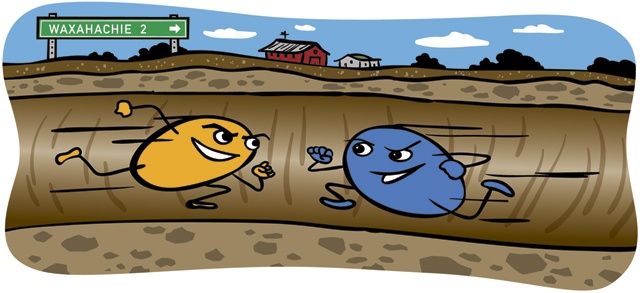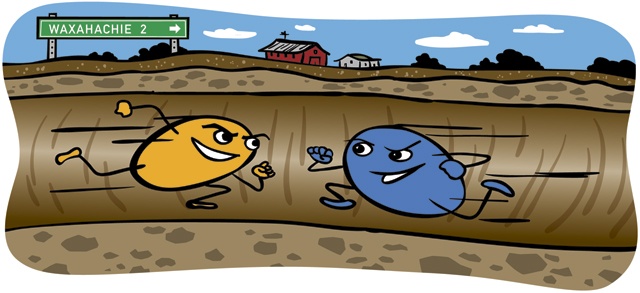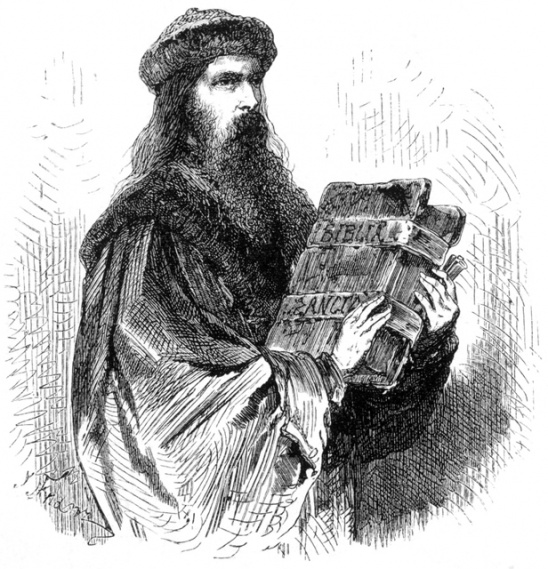Waxahachie was supposed to be where the “God particle” got discovered, but then Congress decided that discovering the origin of matter didn’t matter. And one of the oldest tellings of the story of loaves and fishes resides at the University of Texas.
Waxahachie Washout
When two scientists won the Nobel Prize in physics on October 8 for research conducted in Switzerland that proved the existence of a subatomic particle believed to give mass to all other matter, the newsroom at the Waxahachie Daily Light was nailing down coverage of the police chief’s contract and an upcoming ghost walk downtown.
The real ghost walk occurred 20 years earlier when Congress yanked funding to finish constructing the Superconducting Super Collider, a 54-mile circular laboratory being built under Waxahachie. The SSC would have given researchers the ability to smash subatomic particles into each other at nearly the speed of light as they searched for the existence of the Higgs boson, also called the “God particle.”
Construction on the SSC began in 1991, and 15 miles of tunnel were dug. But in 1993, after $2 billion had been spent on the Waxahachie project, Congress canceled it. That opened the door for the discovery, described by The Wall Street Journal as “one of the seminal moments of modern science,” to be made at Switzerland’s massive particle accelerator, known as CERN, in 2012.
That also left one scientist lamenting what might have been in Texas.
“We would have all this settled long ago if Congress had not foolishly canceled a great scientific project that was going to be built here in Texas,” University of Texas theoretical physicist Steven Weinberg told KUT News in July 2012.
Today, the SSC site is home to the chemical manufacturing company Magnablend.
A Really Old Testament
Hey, Texas, your incunabulum (in-kyə-ˈna-byə-ləm) is showing.
Actually, it’s been on display for more than 35 years and has been around for centuries.
Incunabula (from the Latin word for bands holding the baby in a cradle) are books printed during the earliest period of printing, before 1501. Texas has a copy of one of the world’s most famous incunabulum—the Gutenberg Bible—printed about 1455 in Germany by Johann Gutenberg. The University of Texas shows the incunabulum at the Harry Ransom Center in Austin. The display has been in place since the university purchased the Bible in 1978.
Read more about the Gutenberg Bible—including the history of the printing press and UT’s acquisition and handling of the book—in this month’s Observations.
By the Numbers
Palestine is 4,018 miles from the North Pole. Our Hit the Road this month, “Steam Train,” describes the popular Polar Express Train Ride conducted in November and December. That jaunt starts from the depot in Palestine and goes about 16 miles round-trip. It’s a re-creation of the fantastic train journey children make to the North Pole on Christmas Eve in the Chris Van Allsburg book “The Polar Express” (Houghton Mifflin, 1985) and the 2004 film featuring the voice of Tom Hanks.





